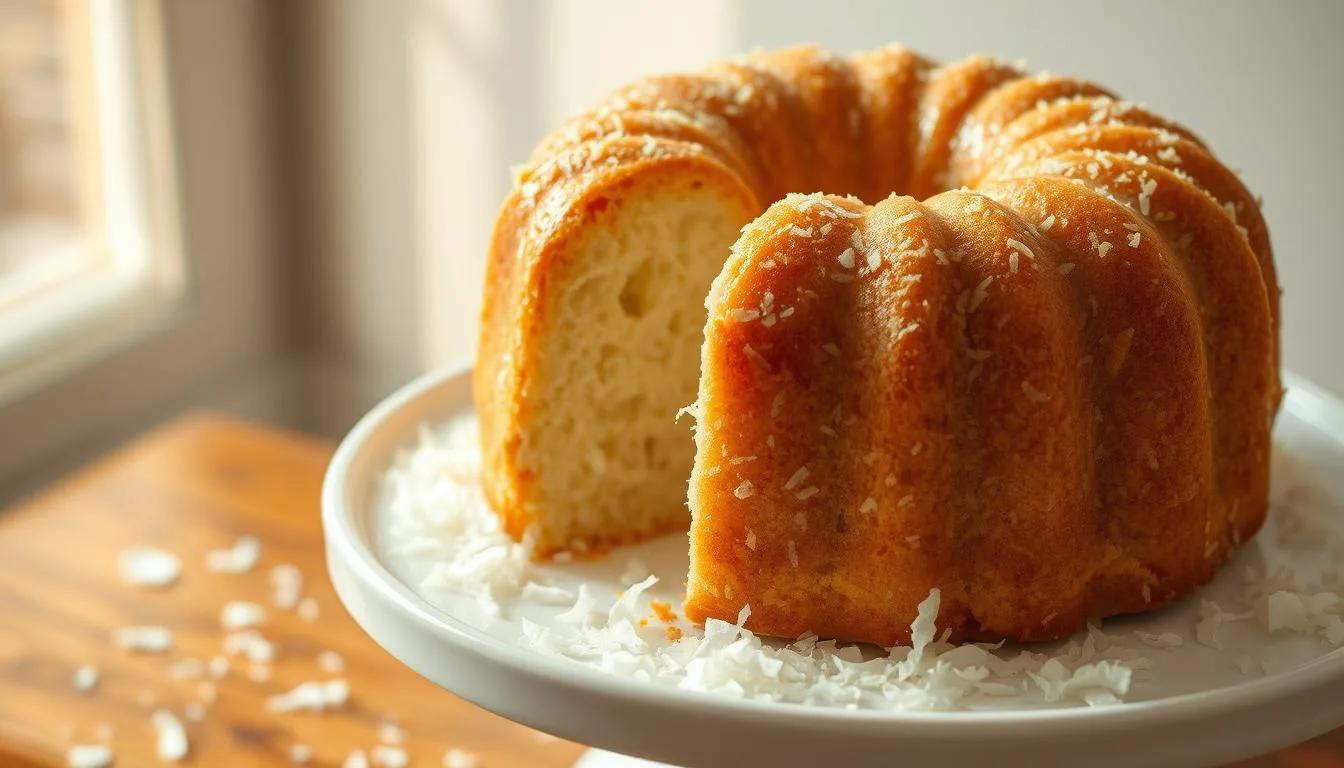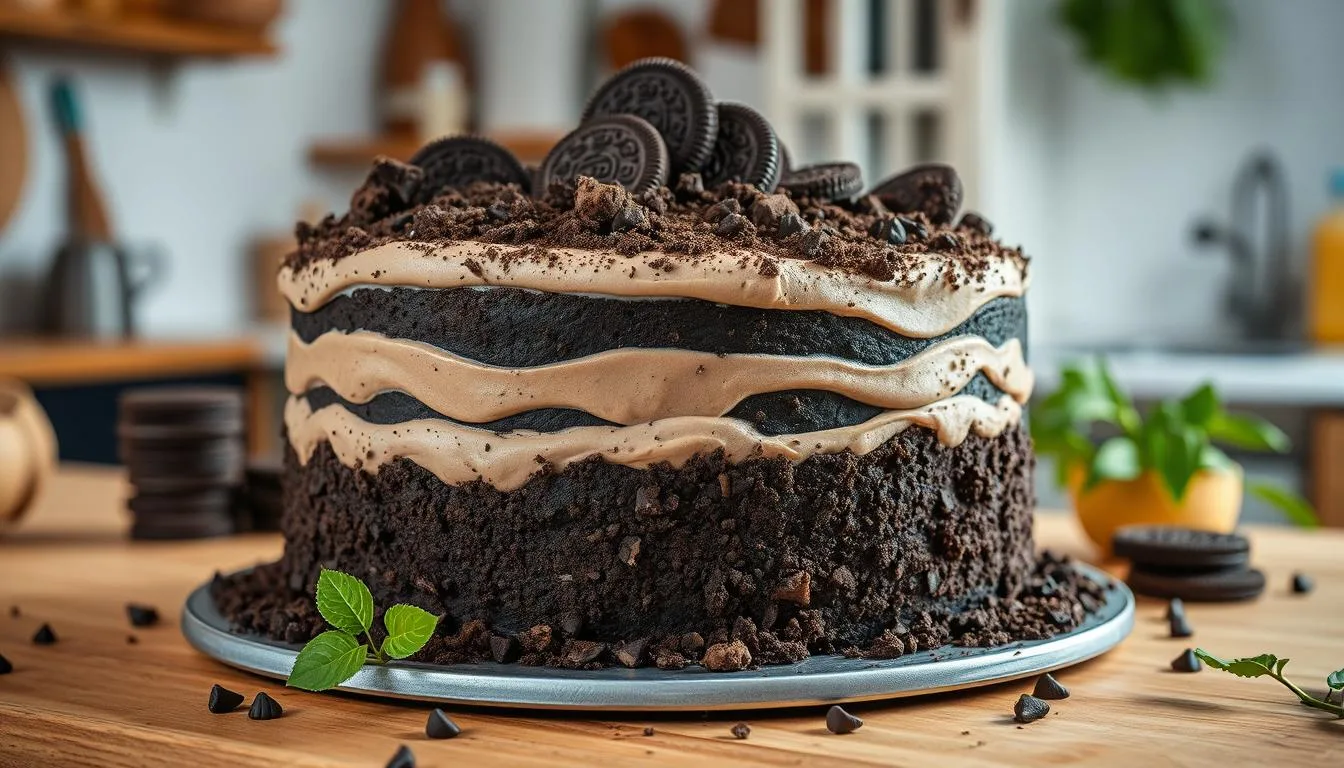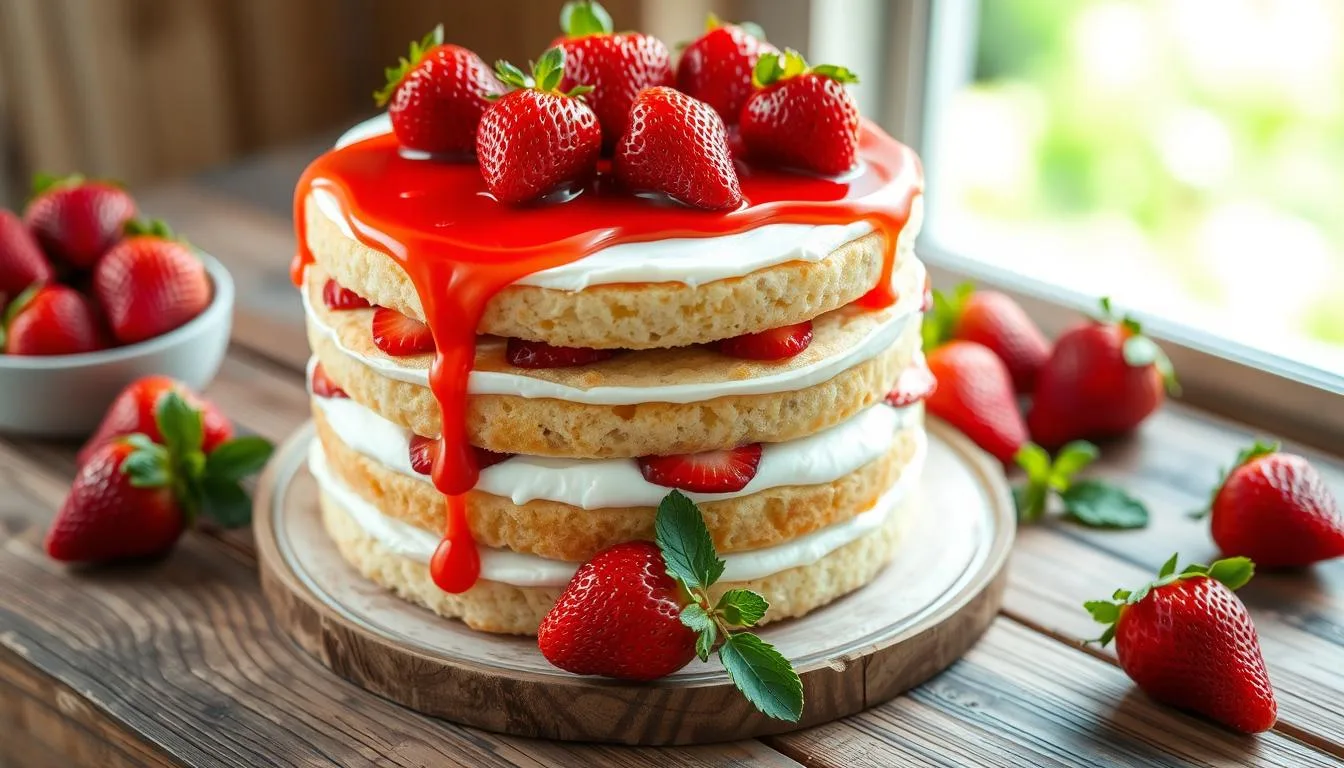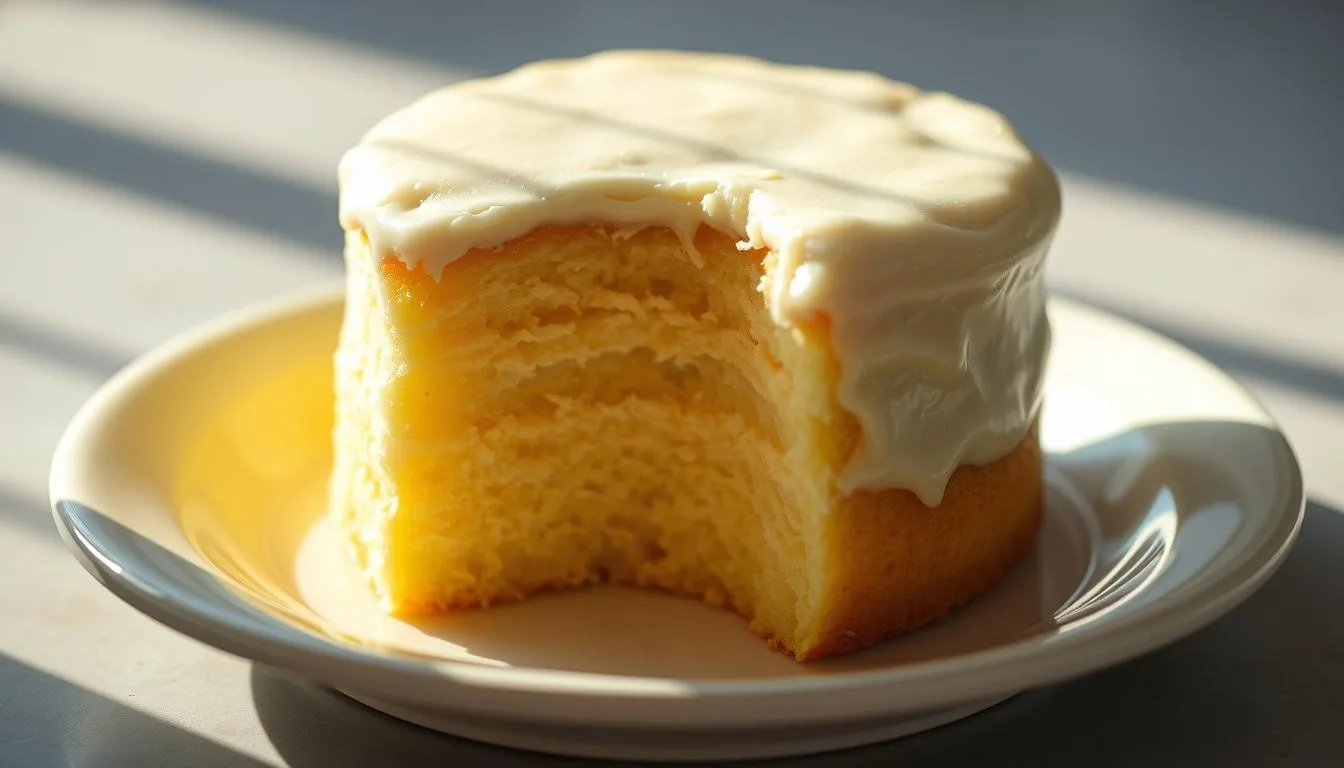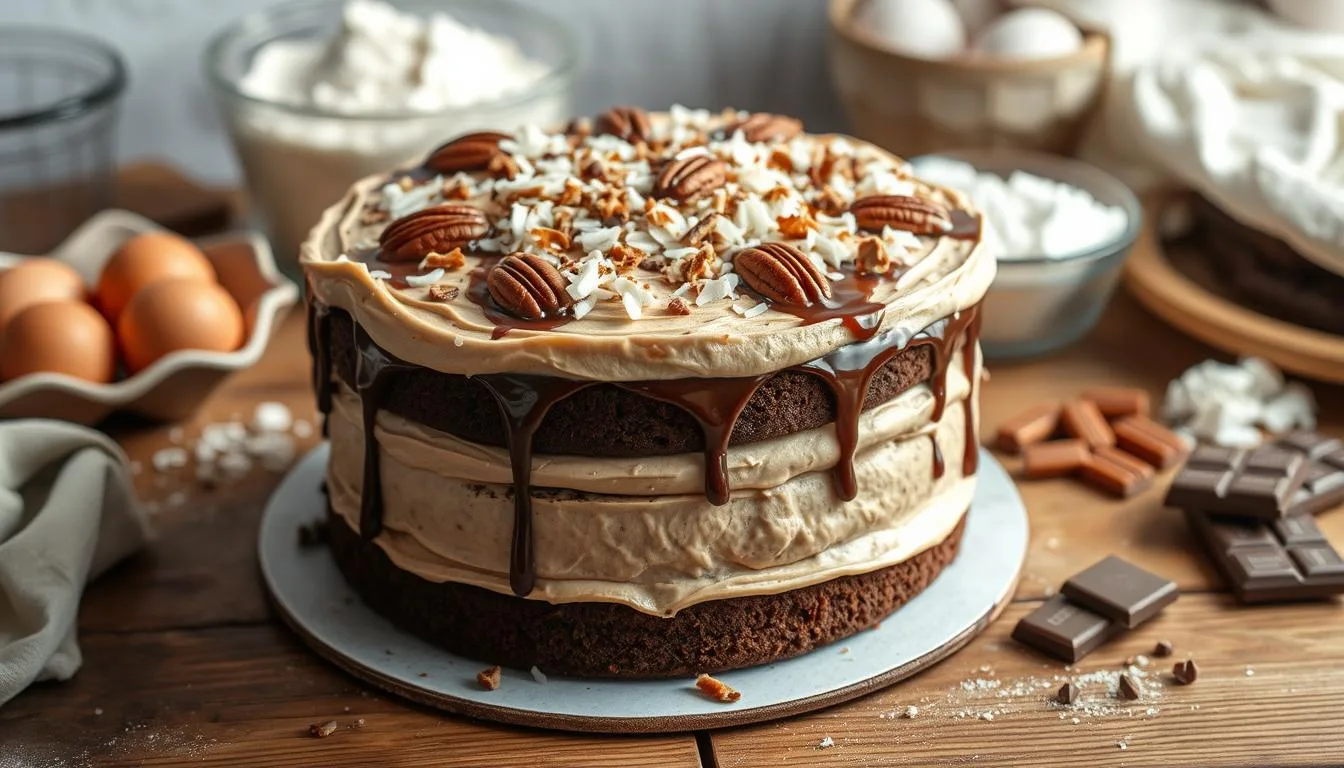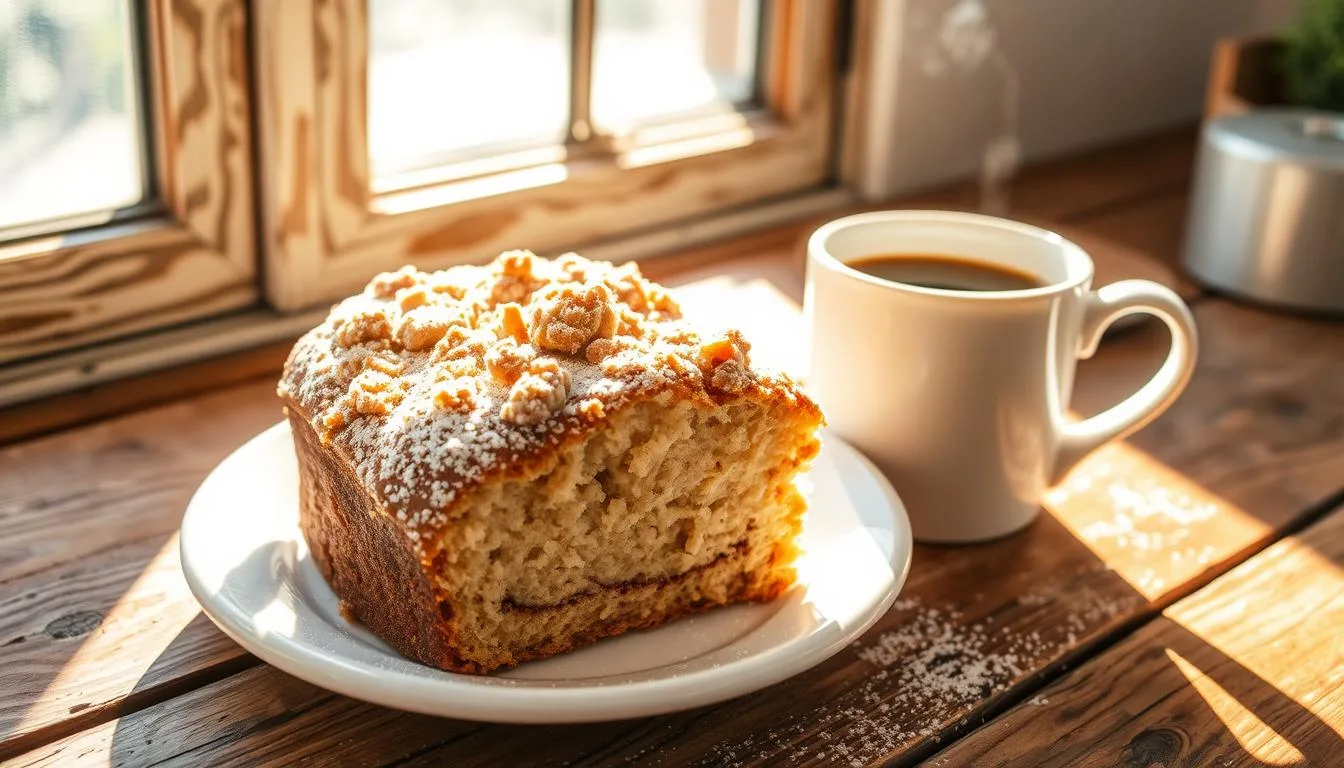Easy Homemade Coconut Cake Recipe
Table of Contents
Baking is my happy place. It’s where memories and sweet smells mix with joy. The homemade coconut cake recipe I’m sharing is more than just a dessert. It’s a journey that turns simple ingredients into happiness in every bite.
Looking for a special treat? This coconut cake recipe is perfect. It’s great for any celebration or just to make your day better. Every bite is filled with warmth and deliciousness.
This recipe is for everyone, no matter your baking level. It’s easy to follow and makes a cake that’s both simple and amazing. Get ready to make a coconut cake that will impress everyone.
Your kitchen will soon smell like a tropical paradise. This dessert is so good, everyone will want more. Let’s start this fun baking journey together!
Introduction to Coconut Cake
Coconut cake is more than a sweet treat. It’s a culinary adventure that excites taste buds and brings joy to kitchens everywhere. This beloved coconut dessert has a rich history that goes beyond simple ingredients.
Brief History of Coconut Cake
The origins of coconut cake come from tropical areas where coconuts grew in abundance. Bakers in the Southern United States took this flavor and made it a cultural staple by the late 19th century. European settlers and Caribbean influences were key in creating this tasty dessert.
- Early recipes emerged in plantation cookbooks
- Southern states popularized coconut cake traditions
- Tropical ingredients became more accessible nationwide
Why You Should Try This Recipe
Making a homemade coconut cake is more than just baking. It’s a chance to connect with culinary traditions and create something amazing in your kitchen.
| Recipe Benefit | Description |
|---|---|
| Flavor Profile | Rich, sweet, tropical essence |
| Difficulty Level | Moderate – suitable for intermediate bakers |
| Crowd Appeal | Universally loved dessert |
Whether you’re an experienced baker or just starting out, this coconut dessert recipe is a delightful experience. It will impress your family and friends. The mix of soft cake, creamy frosting, and toasted coconut is irresistible, symbolizing comfort and celebration.
Ingredients You’ll Need
To bake a delicious coconut cake, start by gathering the right ingredients. The secret to a great cake is using fresh, high-quality parts. These will bring out the rich, tropical flavor everyone loves.
When you’re ready to bake, make sure you have both essential and optional ingredients. The right mix can turn a simple dessert into a special treat.
Essential Ingredients for Your Coconut Cake
- All-purpose flour (2 cups)
- Granulated sugar (1½ cups)
- Unsalted butter (1 cup, room temperature)
- Large eggs (4)
- Vanilla extract (2 teaspoons)
- Baking powder (2 teaspoons)
- Salt (½ teaspoon)
- Coconut milk (1 cup)
Optional Ingredients for Cake Variation
Make your coconut cake even better with these creative additions:
- Shredded coconut for extra texture
- Almond extract for depth of flavor
- Cream of coconut for intense coconut taste
- Toasted coconut flakes for garnish
| Ingredient Category | Recommended Quantity | Purpose |
|---|---|---|
| Dry Ingredients | 2½ cups | Provides structure |
| Wet Ingredients | 1½ cups | Adds moisture |
| Coconut Elements | 1 cup | Enhances flavor |
Your choice of ingredients greatly affects your coconut cake’s outcome. Using fresh, high-quality ingredients will make your cake moist and flavorful. Everyone will love it.
Equipment Required
To bake a tasty coconut cake, you need the right tools. Having your baking essentials ready makes the process smooth and fun. Let’s look at the essential tools for making the perfect coconut cake.
Must-Have Baking Tools
Getting the right equipment is crucial for baking a great coconut cake. Here are the tools you’ll need:
- Stand Mixer or Hand Mixer: Essential for a smooth batter
- Cake Pans (9-inch round preferred)
- Parchment Paper
- Cooling Rack
- Offset Spatula
- Measuring Cups and Spoons
- Whisk
Recommended Mixing Bowls
The right mixing bowls can greatly impact your coconut cake. Professional bakers suggest specific bowls for the best results.
| Bowl Material | Pros | Best For |
|---|---|---|
| Stainless Steel | Durable, lightweight, non-reactive | General mixing and whipping |
| Glass | Microwave-safe, easy to clean | Melting butter, chocolate |
| Ceramic | Beautiful presentation, heavy-duty | Decorative mixing and serving |
Quality baking tools can make your coconut cake amazing. Remember, precision and the right tools are key to a delicious dessert that will wow your loved ones.
Preparing the Coconut Cake Batter
Making the perfect homemade coconut cake starts with the batter. A well-mixed batter is key to a delicious cake that will wow your loved ones.
Before mixing, collect all your ingredients and make sure they’re at room temperature. This ensures a smooth batter for your coconut cake.
Essential Mixing Techniques
Here are the steps to get the perfect coconut cake batter:
- Cream butter and sugar until light and fluffy
- Add eggs one at a time, mixing thoroughly
- Sift dry ingredients to prevent lumps
- Fold in shredded coconut gently
Pro Tips for Batter Success
Remember these expert tips for your homemade coconut cake:
- Use an electric mixer for consistent blending
- Avoid overmixing to prevent a tough cake texture
- Scrape down the bowl sides to ensure even mixing
- Check batter consistency – it should be smooth and slightly thick
Success in making coconut cake comes from patience and detail. Take your time with each step. This way, you’ll make a dessert that everyone will enjoy.
Baking the Coconut Cake
Baking a coconut cake needs precision and care. The right baking technique can turn your ingredients into a delightful dessert. It will impress family and friends. Understanding the baking process is key for a perfect coconut cake every time.
Preheating Your Oven Correctly
Proper oven preparation is the first step in baking coconut cake. Always preheat your oven to 350°F (175°C) at least 15 minutes before baking. This ensures an even temperature and helps your cake rise uniformly.
- Set oven rack in the center position
- Use an oven thermometer to verify accurate temperature
- Avoid opening the oven door frequently during baking
Mastering Baking Time and Doneness
Baking coconut cake requires careful timing. A standard 9-inch cake pan needs 30-35 minutes of baking time. To check for doneness, use these reliable methods:
- Insert a toothpick into the cake’s center
- Look for golden-brown edges
- Cake should spring back when lightly touched
Pro tip: Every oven is different, so start checking your coconut cake around 25 minutes to prevent overbaking. Rotate the pan halfway through baking for even browning.
Cooling and Layering

After baking your coconut cake, it’s time to put it together. Cooling and layering are key to making it look professional. These steps can turn your cake into a showstopper.
The Cooling Process Matters
Cooling your coconut cake right is crucial. Take it out of the pan and set it on a wire rack. This prevents it from getting soggy. Let it cool for 10-15 minutes before you start layering.
- Allow cake to rest at room temperature
- Use a wire rack for even cooling
- Avoid cutting or frosting warm cakes
Professional Layering Techniques
For a beautiful coconut cake, you’ll need sharp tools and patience. Use a long serrated knife to cut even layers. Turn the cake slowly while cutting for straight layers.
| Layering Tool | Purpose |
|---|---|
| Serrated Knife | Create smooth, even cake layers |
| Cake Turntable | Rotate cake for precise cutting |
| Offset Spatula | Spread frosting between layers |
Pro tip: Chill your cake for 30 minutes before cutting. Chilled cakes are more stable and less likely to crumble during coconut cake assembly.
Choosing the Right Frosting
The perfect coconut cake frosting can make your dessert stand out. It’s all about picking the right frosting. You need to find one that matches the cake’s coconut flavor and texture.
When making your coconut cake frosting, think about a few important things. The frosting should be sweet but not too much. It should also bring out the cake’s coconut taste.
Traditional Coconut Frosting Technique
A classic coconut cake frosting has a few key ingredients:
- Cream cheese
- Powdered sugar
- Vanilla extract
- Shredded coconut
This frosting is creamy and rich, matching the cake’s softness. The cream cheese adds a tangy taste. The shredded coconut adds a nice crunch.
Exciting Alternative Frosting Options
Want to try something different? Here are some unique frosting options:
- Whipped Coconut Buttercream – Light and airy
- Tropical Rum-Infused Frosting
- Vegan Coconut Milk Frosting
- Toasted Coconut Cream Cheese Frosting
These frostings offer different tastes and textures. You can pick one that fits your taste or dietary needs.
Decorating Your Coconut Cake
Turning a simple coconut cake into a stunning dessert needs creativity and some special decorating tricks. With a few expert tips, your cake can go from basic to beautiful. It will show off both its taste and looks.
Let’s look at decoration strategies that will make your coconut cake unforgettable. Whether you’re new to baking or have lots of experience, these methods will help you make a dessert that wows everyone.
Simple Decoration Ideas
Begin with easy coconut cake decorating techniques that anyone can do:
- Coat the entire cake with shredded coconut for a classic look
- Create a smooth frosting base and sprinkle toasted coconut flakes on top
- Use a piping bag to create elegant border designs
- Arrange fresh coconut chips in decorative patterns
Advanced Decorating Techniques
If you want to take your coconut cake decorating to the next level, try these more advanced methods:
| Technique | Difficulty Level | Visual Impact |
|---|---|---|
| Coconut Rosette Frosting | Intermediate | High |
| Gradient Coconut Coating | Advanced | Very High |
| Tropical Fruit Accents | Beginner | Medium |
Professional bakers say to practice piping and try different coconut textures. Toasting coconut adds depth and richness. It makes your cake look and taste more sophisticated.
Storing Coconut Cake

Keeping your homemade coconut cake fresh is key. Whether it’s for a special event or just for later, the right storage is crucial. It helps keep the cake’s taste and texture just right.
Keeping Your Cake Fresh
For a cake that stays moist and tasty, follow these tips:
- Always store the cake in an airtight container
- Use a cake dome with a tight-fitting lid if possible
- Keep the cake away from direct sunlight and heat sources
- Cover unfrosted cakes with plastic wrap to prevent drying
Refrigeration vs. Freezing Options
Choosing the right storage method is important. Here are the best options:
| Storage Method | Best For | Duration |
|---|---|---|
| Room Temperature | Cakes without cream-based frosting | 2-3 days |
| Refrigeration | Cakes with cream cheese or buttercream frosting | 5-7 days |
| Freezing | Long-term storage | Up to 3 months |
To freeze your cake, wrap it carefully in plastic wrap and foil. This stops freezer burn and keeps the cake’s flavor. Let it thaw in the fridge overnight for the best taste.
Pro tip: Wrap each slice separately before freezing. This way, you can enjoy a small piece without thawing the whole cake.
Serving Suggestions
There’s more to a coconut dessert recipe than just baking. The right way to serve it can make it stand out. It becomes the highlight of any event.
Perfect Beverage Pairings
Finding the perfect drink to go with your coconut cake is key. It brings out the cake’s rich, tropical taste. Here are some great pairing ideas:
- Hot beverages:
- Freshly brewed coffee
- Chai tea
- Espresso
- Cold beverages:
- Tropical fruit smoothies
- Iced coconut latte
- Sparkling white wine
Presentation Ideas for Special Occasions
Make your coconut cake the star of any event with these creative ideas:
| Occasion | Presentation Style | Recommended Decoration |
|---|---|---|
| Casual Family Dinner | Rustic plating | Toasted coconut flakes |
| Birthday Celebration | Elegant layered display | Fresh flower garnish |
| Wedding Reception | Tiered cake stand | Edible pearl decorations |
The secret to a memorable coconut cake is taste and presentation. Try these ideas to make your dessert unforgettable.
Common Mistakes to Avoid
Making the perfect coconut cake recipe needs careful attention and avoiding common mistakes. Whether you’re new or experienced, knowing these mistakes can improve your baking skills. This ensures a delicious dessert every time.
Overmixing the Batter: A Recipe for Disaster
Mixing the batter is an art when making coconut cake. Overmixing can ruin the cake’s texture. It makes the cake tough and chewy instead of light and tender.
- Mix ingredients until just combined
- Stop mixing when no flour streaks remain
- Use a gentle folding technique
The Critical Role of Fresh Ingredients
Fresh ingredients are key to a successful coconut cake. Old ingredients can ruin the cake’s taste and texture.
| Ingredient | Freshness Check | Replacement Frequency |
|---|---|---|
| Coconut | Check for moisture, no off-smell | Every 3-4 months |
| Flour | No musty odor | Every 6-8 months |
| Baking Powder | Active fizz when mixed with water | Every 6 months |
Avoiding these mistakes will help you make a stunning coconut cake. It will surely impress your family and friends.
Healthier Alternatives
Creating a delicious coconut dessert recipe doesn’t mean you have to give up on health. By making smart swaps, you can make traditional coconut cake ingredients healthier. This way, you can still enjoy a sweet treat without feeling guilty.
For those who care about their health, making a healthier coconut cake is easy. The trick is to choose better ingredients that keep the cake tasty and moist.
Whole Wheat Flour Substitution
Switching to whole wheat flour makes your coconut cake better for you. Whole wheat flour offers:
- More fiber
- More nutrients
- A lower glycemic index
- A nutty flavor
Reducing Sugar Options
It’s easier to control sugar intake with these natural sweeteners:
| Sweetener | Benefits | Recommended Ratio |
|---|---|---|
| Stevia | Zero calories, natural origin | 1:1 replacement |
| Monk Fruit | Low glycemic impact | 1:1 replacement |
| Coconut Sugar | Lower processed, more minerals | Direct substitution |
Start with small changes when you’re making your coconut cake recipe. Try different whole wheat flour mixes and natural sweeteners. This way, you can find a healthier version of this classic dessert that you’ll love.
Conclusion
Making a homemade coconut cake is more than just following steps. It’s about creating a memorable experience. You’ve learned how to make an amazing dessert that will wow everyone.
Your journey to making a coconut cake involves many important steps. You’ve learned about mixing, baking times, and decorating. Each step helps make a cake that’s rich, moist, and full of tropical flavors. The skills you’ve gained will help you with future baking projects too.
This coconut cake recipe is special, whether you’re new to baking or have lots of experience. The techniques and tips you’ve learned will help you make a dessert that looks and tastes amazing. Enjoy the process, trust your instincts, and savor the delicious results of your baking adventure.
Your Baking Success
Remember, practice makes perfect with homemade coconut cake. Every time you bake, you’ll get better and understand baking better. Get ready to enjoy your creations and make lasting memories through baking!
FAQ
How long does it take to make a coconut cake from scratch?
Making a coconut cake takes about 1-2 hours. This includes prep time, baking, cooling, and frosting. Baking itself takes 30-35 minutes. You’ll need more time for cooling and decorating.
Can I make this coconut cake recipe gluten-free?
Yes, you can make it gluten-free. Use a gluten-free flour blend instead of all-purpose flour. Choose a blend with xanthan gum for better texture.
How do I keep my coconut cake moist?
To keep it moist, don’t overbake. Use room temperature ingredients. Adding a simple syrup to the layers before frosting helps too. Store it in an airtight container at room temperature or lightly in the fridge.
Can I freeze a coconut cake?
Absolutely! Freeze an unfrosted coconut cake for up to 3 months. Wrap it in plastic wrap and foil. Thaw it in the fridge overnight before frosting and serving.
What’s the best way to toast coconut for decorating?
To toast coconut, spread it on a baking sheet. Bake at 325°F (165°C) for 5-10 minutes, stirring often. It’s ready when golden brown and fragrant.
How far in advance can I make the coconut cake?
Prepare the cake layers 1-2 days in advance. Wrap them in plastic wrap and store at room temperature. Frost it the day you serve for the best taste and look.
What type of coconut works best for this recipe?
Unsweetened or sweetened shredded coconut works well. For the best flavor, use fresh or high-quality dried coconut. Avoid coconut flakes, as they’re too big.
Can I make this cake without eggs?
Yes, you can use mashed banana, applesauce, or egg replacers. Each will change the cake’s texture. You might need to try a few to find what you like best.
What’s the best frosting for a coconut cake?
Cream cheese frosting or buttercream are great choices. For a unique touch, try a coconut cream frosting with shredded coconut for extra flavor.
How do I prevent my cake from sticking to the pan?
Grease your pans with butter or spray, then dust with flour. You can also use parchment paper for easy removal. Always let the cake cool for 10-15 minutes before removing it.

